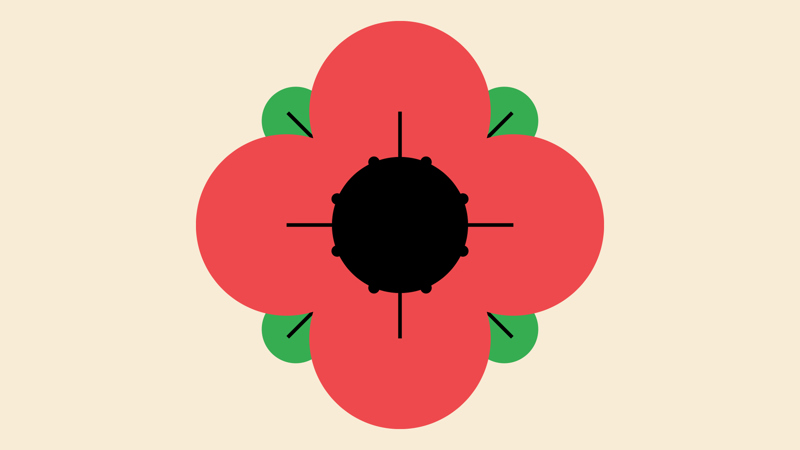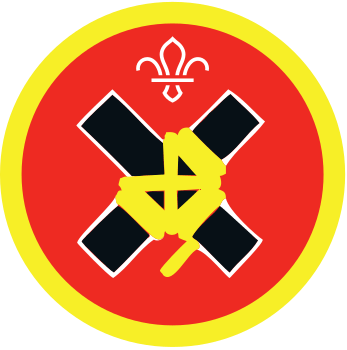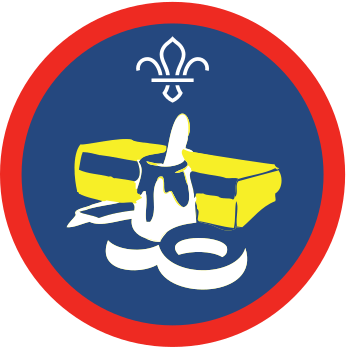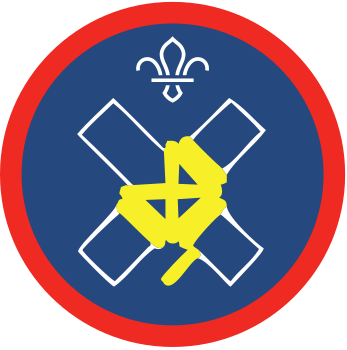
Make paracord poppies
You’ll need
- Red paracord (about 82cm)
- Black paracord (about 37cm)
- Green paracord (about 82cm)
- Scissors
- Lighter
- Sticky tape
- Metal keyring loop (optional)
Before you begin
- Use the safety checklist to help you plan and risk assess your activity. Additional help to carry out your risk assessment, including examples can be found here. Don’t forget to make sure all young people and adults involved in the activity know how to take part safely.
- Make sure you’ll have enough adult helpers. You may need some parents and carers to help if you’re short on helpers.
Remembrance honours people who serve to defend our democratic freedom and way of life. We unite across faiths, cultures and backgrounds to remember the service and sacrifice of the Armed Forces community from the United Kingdom and the Commonwealth. We will remember them.
- We remember the sacrifice of the Armed Forces community from the United Kingdom and the Commonwealth.
- We pay tribute to the special contribution of families and of the emergency services.
- We acknowledge innocent civilians who’ve lost their lives in conflict and acts of terrorism.
Remembrance doesn’t glorify war and its symbol, the red poppy, is a sign of both Remembrance and hope for a peaceful future. Wearing a poppy isn’t compulsory but it’s greatly appreciated by those who it’s intended to support. When and how you choose to wear a poppy reflects your individual experiences and personal memories.
Remembrance unites people of all faiths, cultures and backgrounds, but it’s also deeply personal. It could mean wearing a poppy in November, joining with others in your community on a commemorative anniversary, or taking a moment on your own to pause and reflect. Everyone’s free to remember in their own way or to choose not to remember at all.
- Armistice Day is the 11 November. It marks the armistice agreement that bought an end to the fighting of the first world war.
- People pause at 11am on the 11 November to remember service and sacrifice past and present.
- The national service of Remembrance happens on the closest Sunday to 11 November, which is known as Remembrance Sunday. Each year people gather at the Cenotaph in London and other memorial sites.
- We call the whole period around these dates Remembrance. There are many ways to take part in Remembrance
In 2022, the Royal British Legion remembers the Service of those who work to protect us and our ways of life. Whether in the Armed Forces, Emergency or Civilian Services, past or present, we remember who has served, how they served and why it’s important that we continue to remember them.
Planning this activity
- If you’re new to knot tying, we’ve added some step-by-step guides for all the knots you’ll need. Have a look and try them out beforehand so you know what to do, and can help anyone who’s struggling during the session
- You may choose to seal the cord using heat, such as from a candle, lighter or soldering iron. Only responsible adults should do this. Remember that the cord will stay extremely hot for some time, so everyone should be really careful not to touch it. You could use sticky tape instead.
- If you'd prefer you can buy paracord poppy kits for your group from Scout Store.
Run the activity
- Everyone should gather in a group.
- Everyone should show that they have their three pieces of paracord ready to go.
- The person leading the activity should explain then show everyone how to complete each step of the instructions to make their poppy. You could have smaller groups with a volunteer leading the activity and showing the group how to make the poppy. Alternatively, you could print out step-by-step instruction sheets, with photos, that shows people how to make the poppy.
- Once everyone’s finished their poppy, why not spend some time chatting as a group about what they symbolise and why lots of people wear them around Remembrance? We’ve added some information in the Reflection below to help get you started.
Knots you’ll need to know
A braid around a pole or scarf. Use this knot to create your poppy’s petals.
Sailor’s knotOften used as a decorative knot, you'll use it to make the centre of your poppy.
Lanyard knotA neat knot for lanyards, but in this activity it's used to make a leaf for your poppy.
Cobra lanyard knot
How to make the poppy

1.
Start with the piece of red paracord and use it to tie a two strand sailor’s knot (some people call this a ‘turk’s head knot’).
If you’re not sure how to tie this knot, check out the link below for a simple step-by-step guide.

2.
Once you’ve tied the sailor’s knot, flatten it out keeping both loose ends on one side of the knot. Pull the sides out so that you create a hole in the centre.

3.
Cut the extra loose cord. Ask an adult to burn seal the two ends together or use sticky tape.
Remember that the cord will stay very hot for a while if you burn seal it; don’t touch it until it’s safe.

4.
Take the black cord and tie a lanyard knot.

5.
When you’ve finished the knot, carefully thread the loop through to create a button shape. Make sure that the top loop doesn’t go through the knot or it’ll unravel.

6.
Get the green cord and tie a cobra lanyard knot. Cut the extra cord that’s left over. Ask an adult to burn seal the ends or use sticky tape.
Be careful not to touch the hot cord if you’ve burn-sealed it.

7.
Now everyone should have three knots. Take the loose ends of the black lanyard knot and thread them through the centre of your red, flattened, sailor’s knot.

8.
Then thread the same ends of the black cord through the loop in the green cobra knot.

9.
Pull all three knots to the end of the cord with your lanyard knot and tie a simple knot to keep them all together. Trim the excess black cord and ask an adult to burn seal the ends to keep everything in place.
Let the hot cord cool down before you touch it.

10.
Congratulations, you’ve crafted a paracord poppy! You could tie it to a safety pin to wear on your uniform, or add it to a wreath or other display. You can also add a metal loop to turn it into a keyring, but this is optional.
Reflection
This activity gave everyone the chance to think a bit more about the poppy. Do people usually see lots of poppies around in November? Did anyone already know what they meant and what they symbolised? Do people think it’s helpful to have a shared symbol like a poppy for important things like Remembrance?
In this activity, everyone thought about Remembrance and how it links to their lives. What did people find out about Remembrance? How did it make them feel? How are people going to take part in Remembrance this year?
Safety
All activities must be safely managed. You must complete a thorough risk assessment and take appropriate steps to reduce risk. Use the safety checklist to help you plan and risk assess your activity. Always get approval for the activity, and have suitable supervision and an InTouch process.
- Scissors
Supervise young people appropriately when they’re using scissors. Store all sharp objects securely, out of the reach of young people.
- Why not work together to build all your poppies into a wreath or other display with your group? You could also make a few extra to share with family or friends.
- You could send out the links to Animated knots before your meeting so that anyone who wants to can practice tying some of the knots you’ll be using in this craft.
- You could also try out A pebble to remember or Craft a cotton poppy for some other poppy-making activities.
If anyone struggles with fine motor skills, think about whether A pebble to remember would be a better choice for your group.
All Scout activities should be inclusive and accessible.
Why not check out the information on our heritage web pages to find out more about Scouts in the first world war? There are online exhibitions and other learning resources.
If you want to explore Remembrance further and create your own virtual Remembrance event, have a look at A Remembrance reflection.




